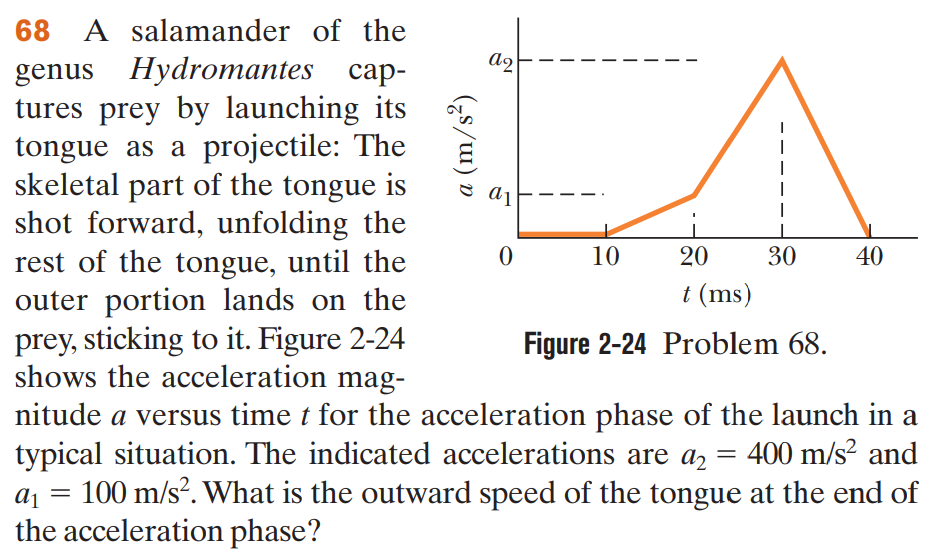68 A salamander of the genus Hydromantes captures prey by launching its tongue as a projectile: The skeletal part of the tongue is shot forward, unfolding the rest of the tongue, until the outer portion lands on the prey, sticking to it. Figure 2-24 shows the acceleration magnitude a versus time t for the acceleration phase of the launch in a typical situation. The indicated accelerations are a2 = 400 m/s2 and a1 = 100 m/s2. What is the outward speed of the tongue at the end of the acceleration phase? Figure 2-24 Problem 68.
